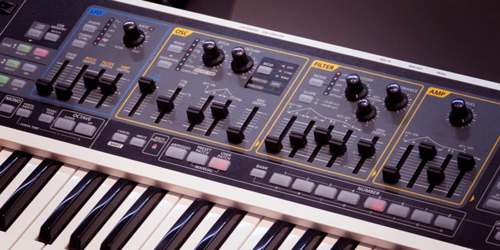A synthesizer is an electronic instrument that uses some form of digital or analog processing to produce acoustic sound. It is an electronic instrument that produces audio signals. Synthesizers are actually a collection of word-making and processing “modules” that can be interconnected in an infinite way. Some of these sound manipulation modules can create sounds that expand the sonic palette for “impossible”, musicians, composers and audio technicians in the real world.
Synthesizers that mimic acoustic instruments produce sounds as long as they do not produce sound sources. These words can be shaped and modulated by elements such as filters, envelopes, and low-frequency oscillators. Synthesizers are usually played with keyboards or other controllers, sequenced or controlled by software or other instruments via MIDI. For example, many electronic synthesizers have “piano” label settings meaning that the setting will produce a sound that inaugurates an 88-key classical piano, but is actually produced by a series of electronic tone generators. In the mid-twentieth century, instruments like synthesizers emerged in the United States with instruments like the RCA Mark II, which were controlled by punch cards and featured hundreds of vacuum tubes. The first electronic sound synthesizer, a masterpiece of magnitude, was created by American acoustical engineers Harry Olson and Herbert Beller in the Laboratory of Radio Corporation of America (RCA) in Princeton, New Jersey. Developed by Robert Mug and first sold in 1964, the Moog synthesizer is credited with pioneering the concepts of analog synthesis, such as voltage-controlled oscillators, envelopes, sound generators, filters, and sequencers. In the 1970s, cheaper than the larger modular synthesizer, the smaller minima standardized the synthesizer as a self-contained device with built-in keyboards. To understand how it does it, we need to know more about sound and how different materials produce it in different ways.
The Butcha Synthesizer, developed by American scientist Donald Buchla, was activated by a “keyboard” that was a touch-sensitive metal plate without a moving key, somewhat comparable to a violin fingerboard. It was used in works such as Morton Sabotnik’s Silver Apple of the Moon (1967) and The Wild Bull (1968). They were adopted by electronic acts and pop and rock groups in the 1960s and 1970s and were widely used in pops of the 1980s. Introduced with the Firelight Synthesizer in 1979, sampling has influenced the music of all songs and has had a major impact on the development of electronic and hip-hop music. Notable among these instruments is Firelight CMI, New England Digital’s Synchrony II, and Yamaha Series FM synthesizer. Currently, the synthesizer is used in every genre of music and is considered one of the most important instruments in the music industry. According to Fact 20, “synthesizers are as important today, and ubiquitous, as human voices are in modern music.















